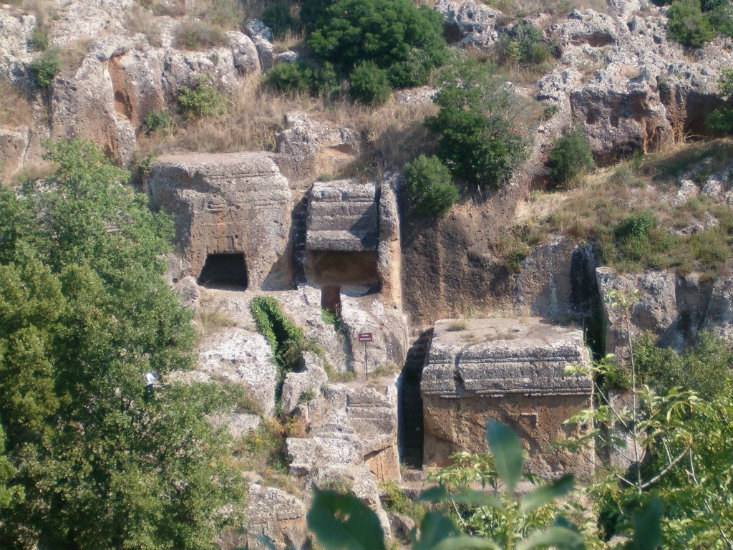The Necropoli di Norchia is an ancient Etruscan necropolis located in the Lazio region of Italy. Carved into the tufa rock, the site features a series of remarkable tombs and burial chambers dating back to the 4th century BC. These tombs are renowned for their intricate facades, which resemble the Etruscan houses of the living, complete with details such as columns and pediments. The necropolis offers a unique glimpse into the funerary practices and architectural prowess of the Etruscan civilization, which once flourished in the area before the rise of the Roman Empire.
The Etruscans
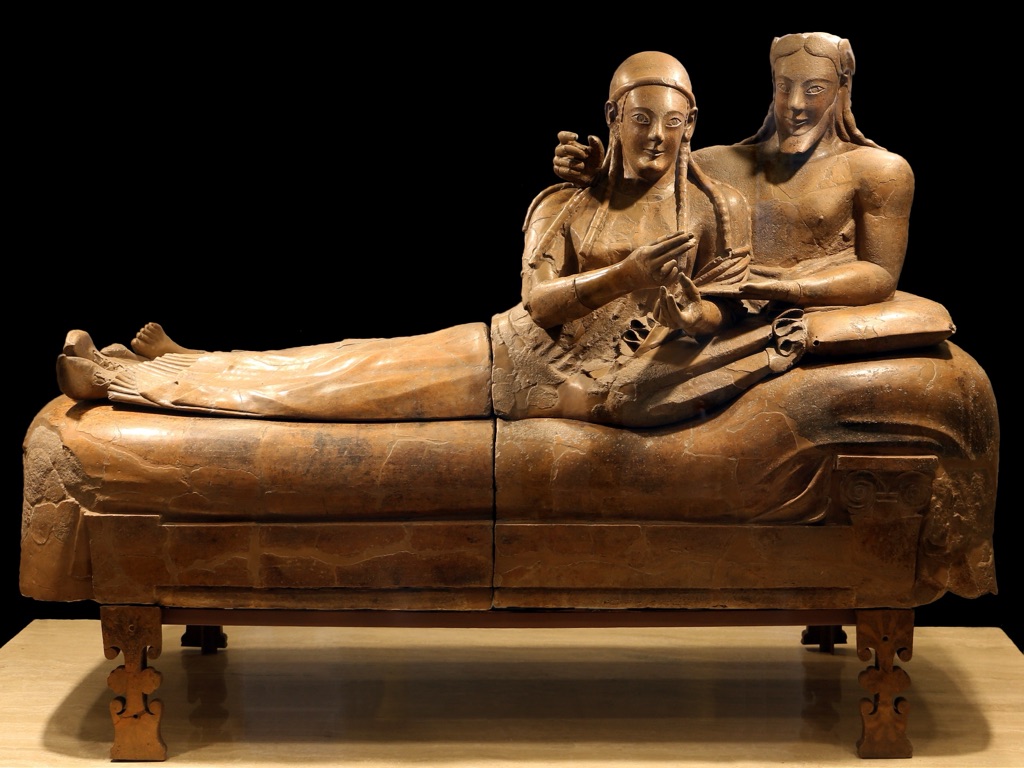
The Etruscan civilization flourished in central Italy before the rise of the Roman Republic and Empire. It began around the 8th century BC, in what is now Tuscany, Lazio, and Umbria. The Etruscans were known for their rich culture and significant influence on Roman religion, architecture, and society. They had their own language, which today we only partially understand because it did not survive in many written records. The Etruscans excelled in metalworking, particularly with bronze, and they traded extensively throughout the Mediterranean. Their art, heavily influenced by Greek styles, included vibrant wall paintings in tombs that depicted lively scenes from everyday life, banquets, and athletic events.
The Etruscan civilization was made up of city-states, each with its own government and alliances. These city-states sometimes banded together or fought against each other. They also faced conflicts with the Greeks and eventually the Romans, leading to their decline. By the end of the 4th century BC, the Etruscans had been assimilated into the Roman world. However, they left a lasting legacy. Much of what we know about the Etruscan civilization comes from their elaborate tombs and the goods contained within. These archaeological finds provide a glimpse into a sophisticated society that valued family, religion, and the enjoyment of life. The Romans adopted many Etruscan practices, including the toga and certain religious rituals. Even today, the mystery of the Etruscan civilization continues to captivate historians and archaeologists alike.
The origins and ethnicity of the Etruscan people have long been a subject of debate among historians and archaeologists. While some theories suggest they were indigenous to the Italian Peninsula, others propose that they migrated from the Near East or the Aegean region. This debate is partly due to the unique aspects of the Etruscan language and culture, which stand distinct from their Italic and Latin neighbors. Genetic studies have provided some insights, indicating a blend of local and Near Eastern ancestries, which suggests a complex demographic history. The Etruscans themselves, in their societal organization and achievements, present a picture of a distinct group, contributing significantly to the tapestry of ancient civilizations in the Mediterranean.
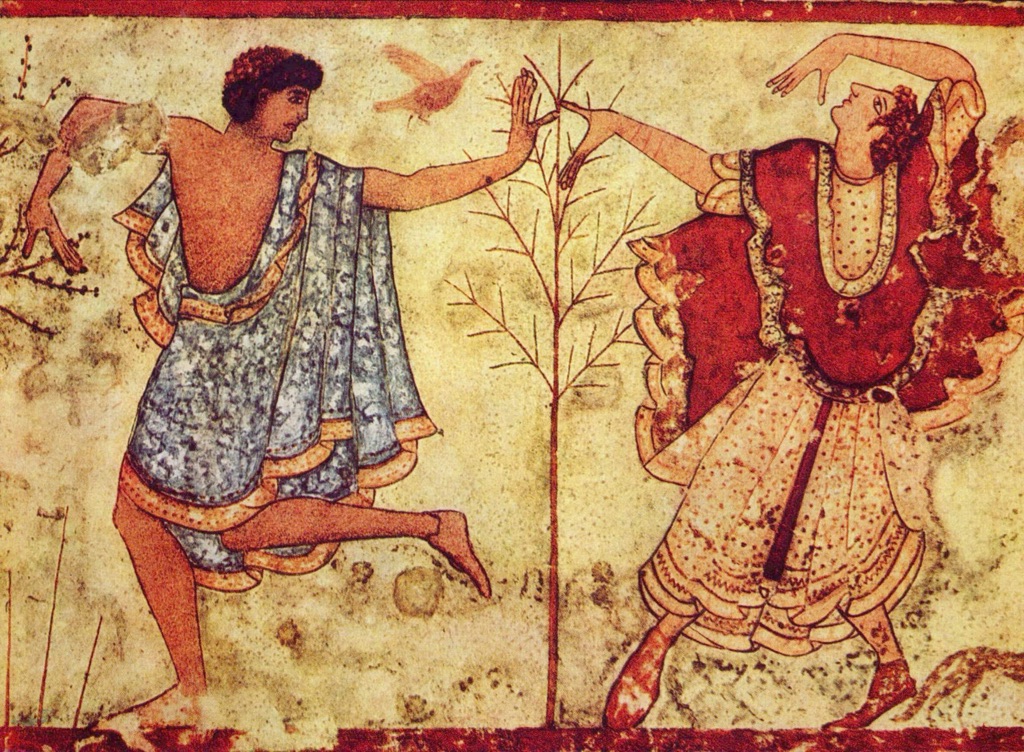
The relationship between the Romans and the Etruscans was complex, marked by both deep influence and bitter rivalry. Initially, the Etruscans had a considerable impact on early Roman culture, politics, and religion. However, as Rome grew in power and ambition, tensions escalated. The Romans, in their historical narratives, often portrayed the Etruscans as tyrannical or decadent, possibly to justify their own expansionist aims and the eventual assimilation of Etruscan territories into the Roman Republic. This negative portrayal, coupled with the competition for control of trade routes and resources, fueled animosity between the two civilizations. Despite this, the Romans adopted many Etruscan practices, indicating a grudging respect for their knowledge and traditions.
In terms of physical appearance, the art and sculptures left behind by the Etruscans provide valuable clues. They depicted themselves with a range of hair colors, including black, brown, and red, and both men and women were shown with a focus on beauty and adornment. Men were often portrayed with neatly trimmed beards or clean-shaven, while women were shown with elaborately styled hair and wearing jewelry. These artistic representations, along with skeletal remains, suggest that the Etruscans, much like other Mediterranean peoples of the time, exhibited a diverse range of physical features. Their clothing, as seen in tomb paintings, included brightly colored garments that indicated a love for vibrant fashion and possibly denoted social status.
Today, there are no Etruscans in the sense of a distinct ethnic group or community living in Italy or elsewhere. The Etruscan language has vanished, with no known speakers for over two millennia, and their culture was fully assimilated into Roman society by the 1st century BC. However, the legacy of the Etruscans lives on in various aspects of Italian and Western culture. The extensive archaeological remains, from monumental tombs to everyday utensils, continue to provide insight into their way of life. Moreover, the fascination with Etruscan civilization has endured, with ongoing research and exhibitions dedicated to uncovering more about their society, beliefs, and contributions to subsequent European cultures. In this way, while the Etruscans as a people may have disappeared, their influence remains a vibrant part of our historical heritage.
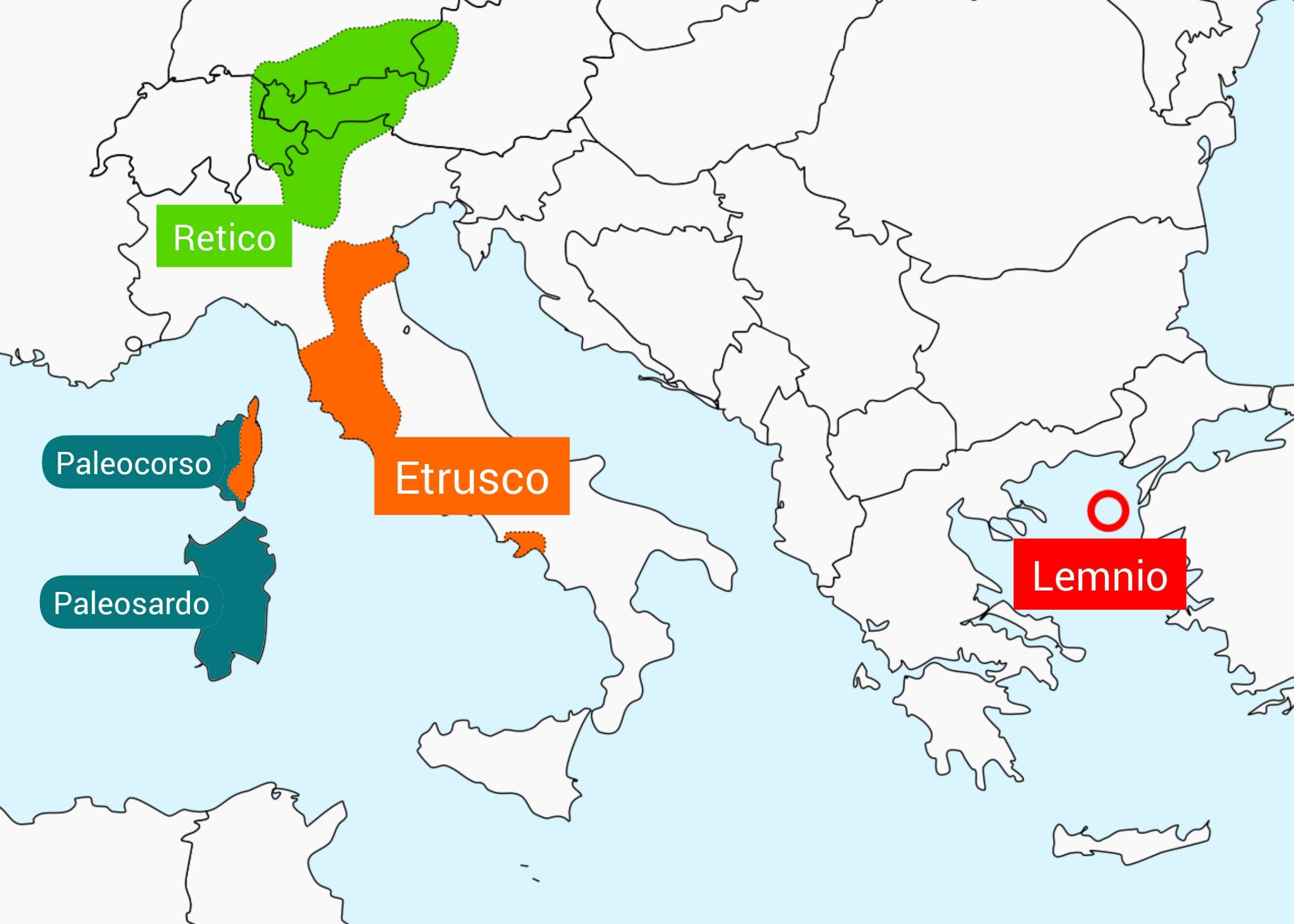
Explore Etruscan Archaeological Sites and Artifacts
History of the Etruscans
Timeline and Major Events
The Etruscans, an ancient civilization located in the region of Etruria (modern-day Tuscany, western Umbria, and northern Lazio), flourished from the 8th to the 3rd century BCE. Their history is marked by a series of significant events and periods that shaped their development and interactions with neighboring cultures.
The origins of the Etruscan civilization can be traced back to the Villanovan culture, around the 9th century BCE, characterized by iron age artifacts and cremation burials. This period laid the groundwork for the Etruscan civilization’s emergence in the 8th century BCE, marked by the establishment of powerful city-states such as Tarquinia, Veii, and Cerveteri.
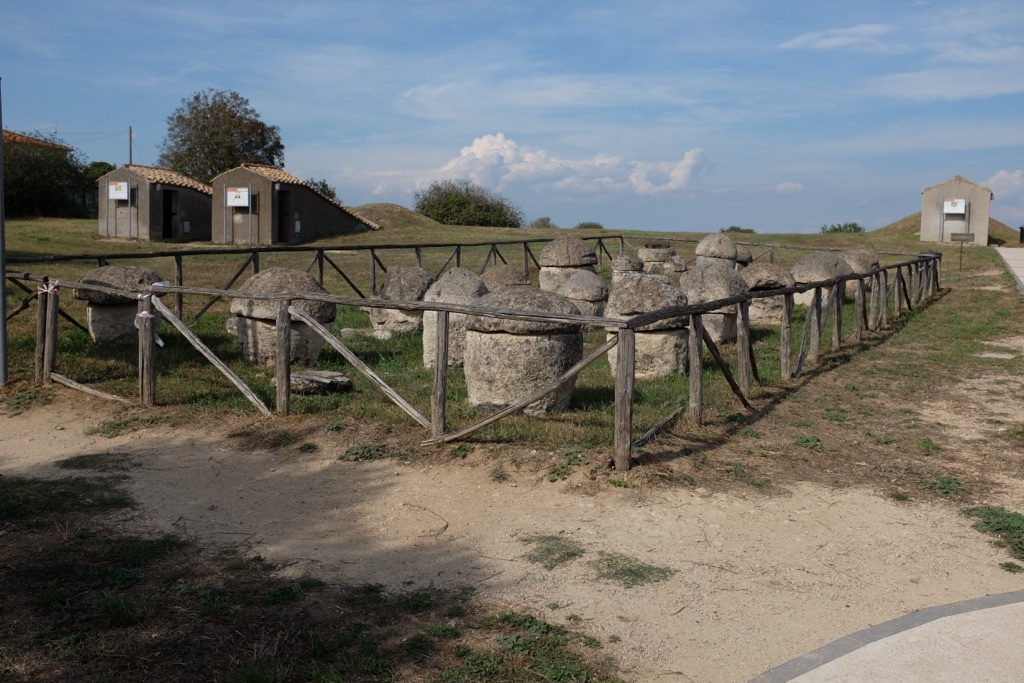
The 7th to 6th centuries BCE represented a golden age for the Etruscans, as they expanded their influence through trade and military conquests across the Italian peninsula and into the Mediterranean. This era saw the peak of Etruscan art, architecture, and cultural influence, with significant interactions with Greek and Phoenician civilizations.
However, the 5th century BCE began a period of decline for the Etruscans, primarily due to increasing pressure from the rising power of Rome. Several wars between the Etruscans and Romans, notably the Roman-Etruscan Wars, gradually eroded Etruscan territories and power. By the 3rd century BCE, the Etruscan civilization had been fully subsumed into the Roman Republic, marking the end of their distinct cultural and political identity.
Culture
Religion
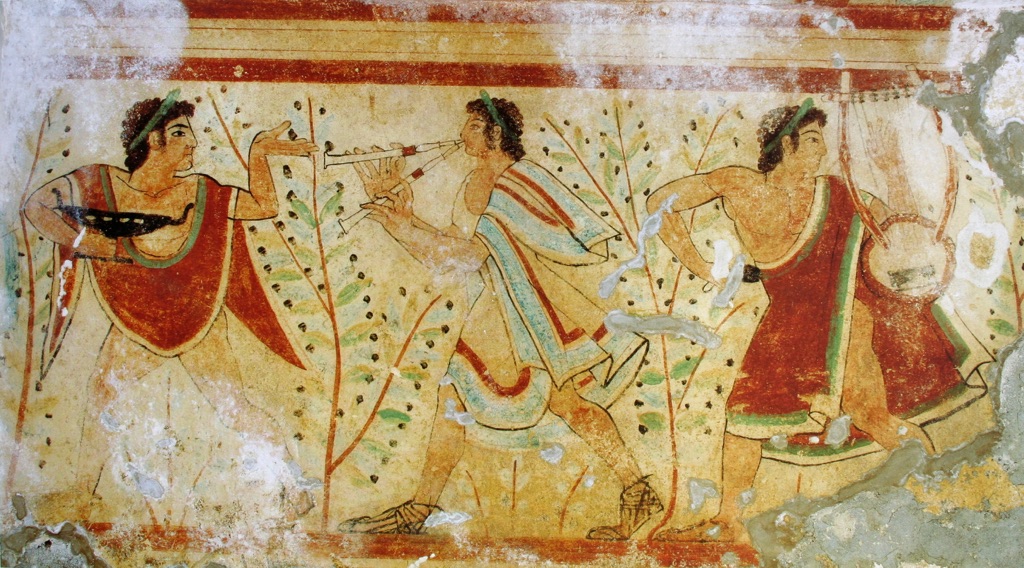
Etruscan religion was a complex system of polytheism, with a pantheon of gods similar to, but distinct from, those of the Greeks and Romans. Their religious practices were deeply intertwined with every aspect of daily life and governance, including the interpretation of omens and the veneration of ancestors. The Etruscans were particularly noted for their practice of haruspicy, the reading of entrails, which played a significant role in public and private decision-making.
Social Structure
The Etruscan society was hierarchical, with a ruling class of nobles who dominated the political, religious, and economic life of their city-states. This elite class was supported by a class of commoners and slaves. The social structure was patriarchal, but women in Etruscan society enjoyed more freedoms and rights compared to their Greek and Roman counterparts, including the ability to own property and participate in social events.
Art
Etruscan art is renowned for its vitality and expressiveness, with significant contributions to sculpture, pottery, and metalworking. Their artistic output includes elaborate tombs, vibrant wall paintings, and terracotta sculptures, reflecting both the joy of life and the complexity of their religious beliefs. Etruscan artists were also skilled in the creation of intricate jewelry and bronze work, including mirrors and bucchero ware.
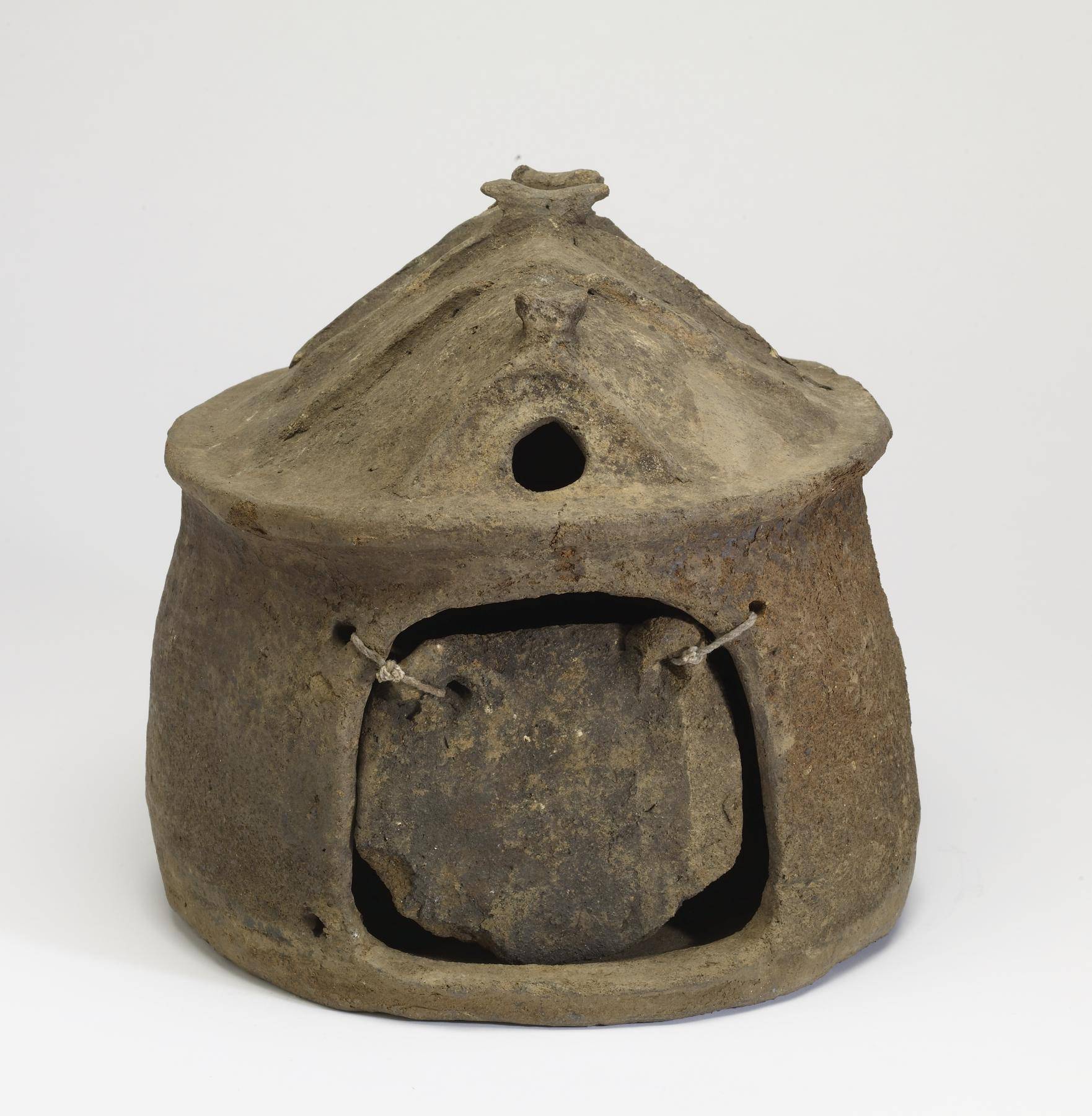
Daily Life
Daily life for the Etruscans varied significantly between the urban elite and the rural commoners. The elites enjoyed a life of luxury, with banquets, games, and religious ceremonies playing a central role in their social life. Their homes were often lavishly decorated, reflecting their wealth and status. In contrast, the commoners, who worked the land or in artisanal crafts, lived in simpler conditions, though they shared in the rich religious and cultural life of their society.
The Etruscans left a lasting legacy on the Italian peninsula, particularly in the areas of religion, art, and urban planning, influencing the development of Roman culture and beyond. Their civilization, while eventually absorbed by Rome, remains a subject of fascination and study for its unique contributions to the ancient Mediterranean world.
Language and Writing
Overview of the Etruscan Language
The Etruscan language, now extinct, was spoken and written by the Etruscan civilization, predominantly in the region of Etruria (modern Tuscany, western Umbria, and northern Lazio) in Italy. This non-Indo-European language remains partially understood, with knowledge primarily derived from inscriptions on monuments and artifacts. The Etruscan language is unique, with no known close relatives, though some theories suggest a link to the Lemnian language of the Aegean Sea and the Rhaetic language spoken in the Alps.
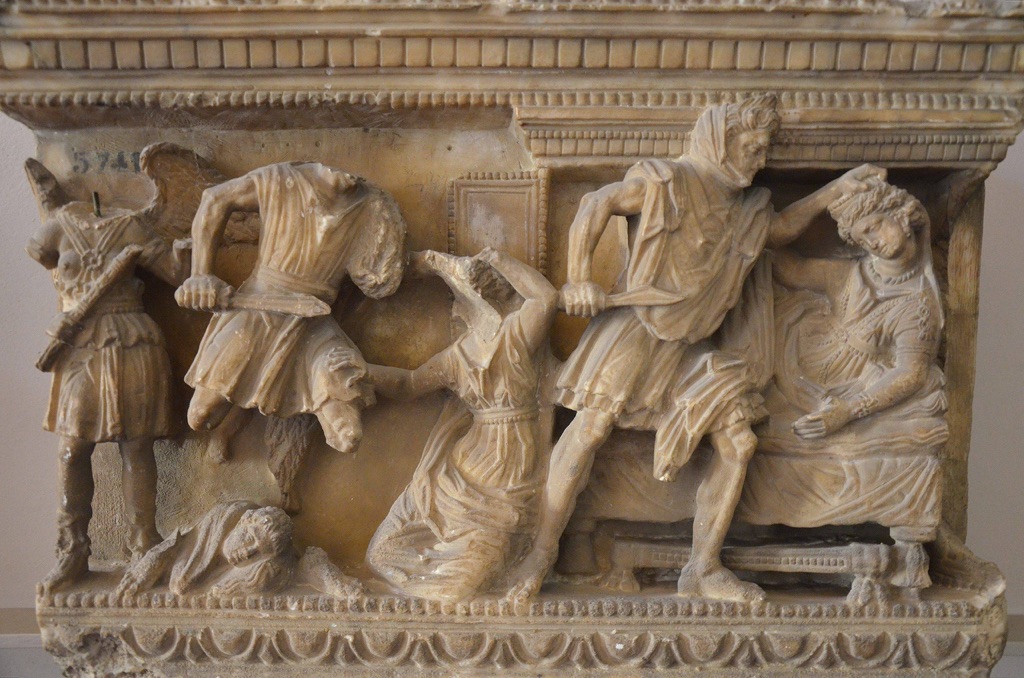
Etruscan Script
The Etruscans adopted and adapted the Greek alphabet to create their own script, known as the Etruscan alphabet, around the 8th century BCE. This script was used to write the Etruscan language and had a significant influence on the development of the Latin alphabet. The Etruscan script consisted of 26 characters, representing sounds in the Etruscan language that were not present in Greek. This script was primarily used for religious and funerary texts, inscriptions on public monuments, and on everyday objects such as pottery and mirrors.
Notable Inscriptions
One of the most significant Etruscan inscriptions is the Pyrgi Tablets, discovered in 1964 near the ancient coastal town of Pyrgi. These gold tablets are bilingual, written in both Etruscan and Phoenician, and provide valuable insights into the Etruscan language and its use in religious contexts. Other important inscriptions include the Cippus of Perugia, a large stone slab detailing a legal contract, and the Liber Linteus, a linen book used as a mummy wrapping that contains the longest known Etruscan text.
Influence and Legacy
Impact on Roman Culture
The Etruscans had a profound influence on early Roman culture, contributing significantly to the development of Roman religion, architecture, and social customs. The Romans adopted many Etruscan gods and religious practices, including the interpretation of omens and the use of augurs. Etruscan engineers and architects introduced advanced techniques to Rome, such as the construction of the Cloaca Maxima, Rome’s great sewer system, and the use of the arch in architecture. The Etruscan influence is also evident in the Roman adoption of gladiatorial games and the toga, a distinctive garment of Roman citizens.

Contributions to Mediterranean Civilization
The Etruscans were skilled artisans, renowned for their metalworking, especially in bronze, and their vibrant fresco paintings that adorned the walls of their tombs. They were also accomplished traders and seafarers, facilitating cultural exchanges throughout the Mediterranean. Etruscan craftsmanship in jewelry, pottery, and sculpture had a lasting impact on Mediterranean art, influencing neighboring cultures and contributing to the rich tapestry of ancient Mediterranean civilization.
Modern Interpretations
In modern times, the Etruscans continue to fascinate scholars and the public alike. Archaeological discoveries have shed light on the sophistication of Etruscan society and its contributions to later European cultures. The mystery surrounding the Etruscan language and its partial decipherment adds to the intrigue of this ancient civilization. Contemporary research in archaeology and linguistics continues to uncover the legacy of the Etruscans, providing a deeper understanding of their role in shaping the cultural landscape of ancient Italy and the Mediterranean region.
FAQ: Exploring the Enigmatic Etruscans
Who Were the Etruscans?
The Etruscans were an ancient civilization located in the region of Etruria, which corresponds to modern-day Tuscany, western Umbria, and northern Lazio in Italy. Flourishing from the 8th to the 3rd century BCE, they were known for their rich culture, advanced metallurgy, and trade networks. The Etruscans played a significant role in shaping early Roman society, religion, and infrastructure.
What were the Etruscans known for?
The Etruscans, an ancient civilization flourishing in Italy before the rise of Rome, were renowned for their rich cultural and technological advancements. They were master metalworkers, particularly in bronze, and their craftsmanship in jewelry and sculpture remains admired. The Etruscans were also skilled in the construction of complex urban infrastructure, such as temples, tombs, and drainage systems, showcasing their architectural prowess. Their influence on Roman culture, especially in religion, art, and politics, was profound, laying foundational aspects of what would become the Roman Empire.
Where are the Etruscans today?
The Etruscans as a distinct civilization have long since faded, merging into the Roman Empire during the late 4th century BC. The territories once inhabited by the Etruscans are now part of modern Italy, primarily within the regions of Tuscany, Umbria, and Lazio. While the Etruscans themselves no longer exist as a separate people, their legacy lives on through their art, architecture, and the wealth of archaeological remains that continue to be studied and admired today.
Were the Etruscans in the Bible?
The Etruscans are not directly mentioned in the Bible. The historical and geographical focus of the Bible primarily centers on the Near East and the interactions between the Israelites and their neighbors. Since the Etruscans were located in the Italian peninsula, far from the principal settings of the Bible, there are no specific references to them in the biblical texts. However, the broader cultural and trade interactions within the Mediterranean could have indirectly connected the Etruscans with the peoples and events described in the Bible.
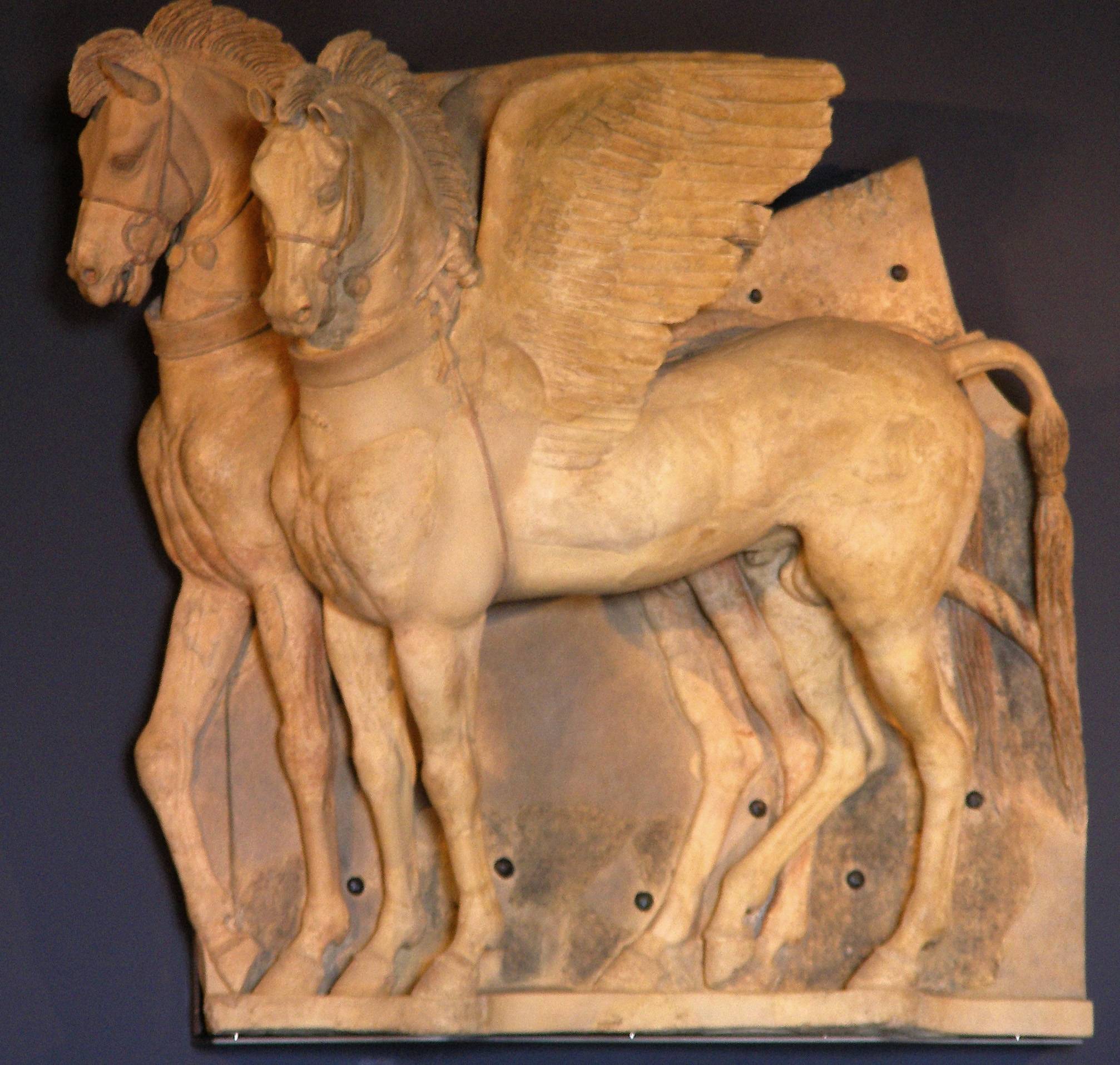
What was the Etruscan religion?
The Etruscan religion was a complex system of beliefs and practices, polytheistic in nature, with a pantheon of gods and goddesses that influenced and controlled various aspects of the natural world and human life. Etruscan deities were closely linked to Greek mythology, yet they maintained distinct characteristics and were worshipped through unique rituals and ceremonies. The Etruscans believed in divination and the interpretation of omens, with augurs playing a crucial role in public and private decision-making by reading the will of the gods through the flight patterns of birds, lightning, and other natural phenomena. Their religious practices also included elaborate funerary rites, with the construction of impressive tombs that reflected beliefs in an afterlife. The influence of Etruscan religious practices can be seen in the development of Roman religion, particularly in the adoption of gods and rituals.
How Did the Etruscans Influence Early Rome?
The Etruscans had a profound influence on early Rome, contributing to its urban planning, architecture, and religion. They introduced the arch and the use of hydraulics in construction, which were pivotal in the development of Roman engineering. The Etruscan religion, with its pantheon of gods and complex rituals, also deeply impacted Roman religious practices. Moreover, the Etruscans contributed to the social and political structure of Rome, with the establishment of the Roman Republic bearing similarities to Etruscan governance.
How Did the Etruscans Typically Bury Their Dead?
Etruscan burial practices varied over time and by status, but they typically buried their dead in elaborate tombs. Early Etruscans practiced both cremation and inhumation, with the ashes or the body placed in urns or sarcophagi. By the 6th century BCE, they began constructing elaborate tombs, including tumuli (mound tombs) and rock-cut chambers. These tombs were often richly decorated with frescoes, reliefs, and grave goods, reflecting the wealth and status of the deceased.
Etruscans Pronunciation
The word “Etruscans” is pronounced as /ɪˈtrʌskənz/. The emphasis is on the second syllable, with the “e” sounding like the “i” in “it,” the “tru” like “truss,” and the “cans” like “cans.”
The Etruscans Often Decorated Their Tombs to Resemble
The Etruscans often decorated their tombs to resemble the interiors of houses. This practice reflected their beliefs in the afterlife, where the dead were thought to continue a similar existence to their earthly life. The tombs featured detailed frescoes and reliefs depicting banquets, dances, and daily activities, furnished with items such as beds, chairs, and utensils, creating a comfortable environment for the deceased in the afterlife.
Were the Etruscans Black?
Understanding the Ethnic Origins of the Etruscans
The question of whether the Etruscans were black pertains to the broader inquiry into the ethnic origins of this ancient civilization. The Etruscans inhabited the region of Etruria, modern-day Tuscany, Umbria, and parts of Lazio in Italy, from the late Bronze Age (circa 1200 BCE) until fully assimilated into the Roman Republic by the late 4th century BCE.
Archaeological and Genetic Evidence
Current archaeological and genetic evidence does not support the notion that the Etruscans were black in the sense of having Sub-Saharan African ancestry. Artifacts, including tomb paintings and sculptures, depict the Etruscans with features typical of Mediterranean populations of Europe. These artistic representations, while not definitive proof of ethnicity, provide insight into how the Etruscans saw themselves and were perceived by others.
Recent genetic studies have further clarified the origins and makeup of the Etruscan population. Analysis of ancient DNA suggests that the Etruscans were closely related to other Italic peoples of the Mediterranean region. Their genetic markers indicate a predominant lineage from Neolithic farmers who migrated from Anatolia (modern-day Turkey) and mixed with local hunter-gatherers in the Italian peninsula. This genetic makeup is consistent with populations from the Mediterranean basin and does not show significant direct ancestry from Sub-Saharan Africa.
Historical Context and Misinterpretations
The misconception that the Etruscans were black may stem from a broader tendency to oversimplify the complex tapestry of ancient ethnic identities. Ancient civilizations, including the Etruscans, were composed of diverse groups and were subject to migration, conquest, and intermarriage, which makes defining their ethnicity in modern terms challenging.
Additionally, the historical narrative has sometimes been influenced by outdated theories or misinterpretations of archaeological findings. It is essential to rely on the latest scientific evidence and scholarly consensus when discussing the ethnic origins of ancient peoples.
In conclusion, based on current archaeological and genetic evidence, the Etruscans are not considered to have been black in terms of Sub-Saharan African ancestry. They were part of the broader Mediterranean world, with origins tracing back to ancient farmers from Anatolia and local European hunter-gatherers. Understanding the ethnic composition of ancient civilizations like the Etruscans requires a careful examination of both historical records and modern scientific data.
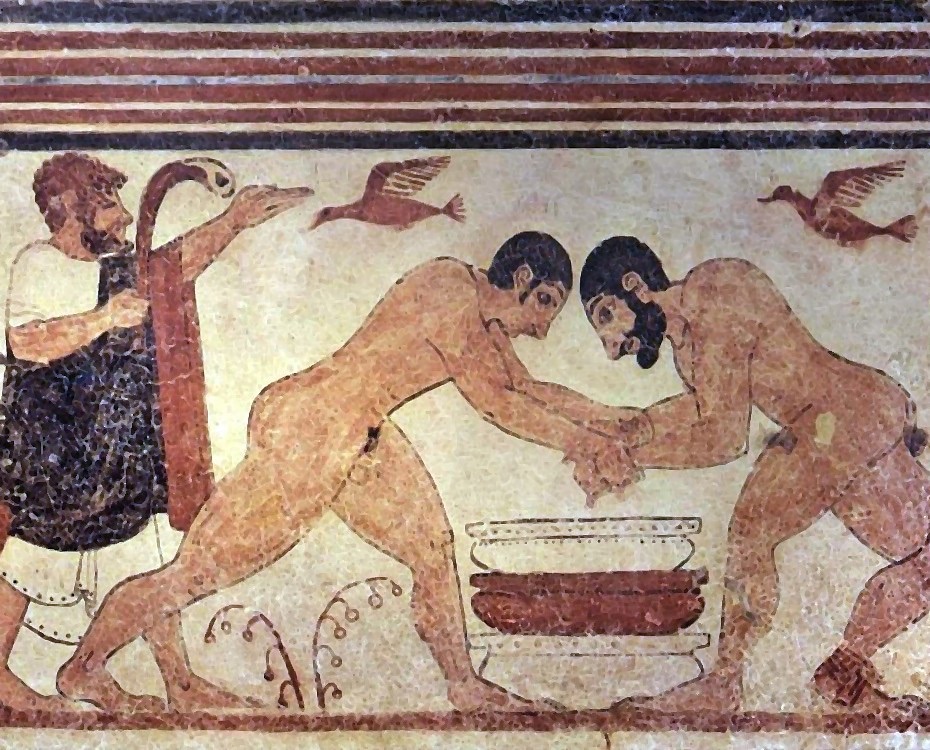
Tomb of the Augurs
The Tomb of the Augurs is an ancient Etruscan burial site, renowned for its intricate wall paintings. These frescoes provide a glimpse into the Etruscan culture and their beliefs about the afterlife. The tomb, located in Tarquinia, Italy, is one of many in the Necropolis of Monterozzi, a UNESCO World Heritage site. It dates back to the 6th century BC and showcases the artistic and architectural prowess of the Etruscans. The tomb’s name derives from the depiction of an augur, a priest and official in ancient Rome, within the frescoes, which suggests the importance of religious and ceremonial practices in Etruscan society.

Monterozzi necropolis
The Monterozzi necropolis stands as a testament to the rich cultural tapestry of the Etruscan civilization. Nestled near Tarquinia in Italy, this ancient burial site is replete with over 6,000 graves. What makes it a treasure trove for historians and art enthusiasts alike are the exquisite frescoes adorning many tombs. These intricate paintings provide a vivid peek into Etruscan life, beliefs, and beyond. The vibrant colors and dynamic scenes, still resplendent after millennia, mirror the sophistication of a society that once rivaled the power of Rome.
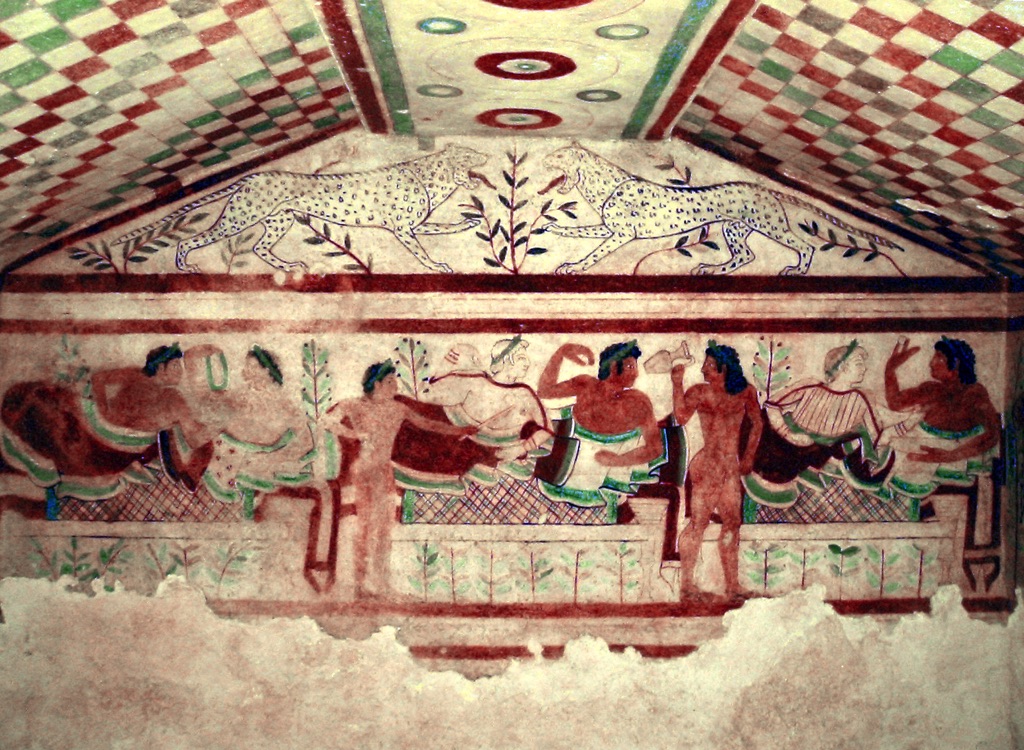
Etruscan Necropolis of Tarquinia
The Etruscan Necropolis of Tarquinia stands as a testament to the mystical and advanced Etruscan civilization. This UNESCO World Heritage Site reveals a wealth of history through its decorated tombs and intricate frescoes. Visitors can immerse themselves in an ancient culture that valued the afterlife, art, and connectivity with nature. Exploring Tarquinia’s underground passages leads to a unique encounter with vivid tales of Etruscan life and beyond.
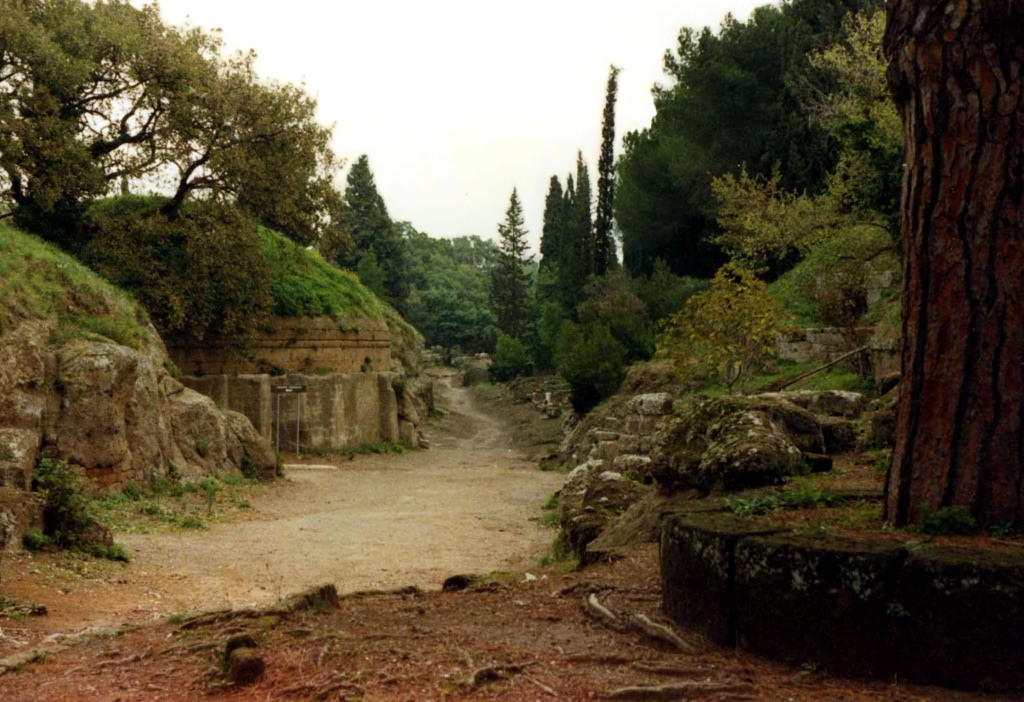
Banditaccia Necropolis
The Banditaccia Necropolis stands as a testament to the Etruscan civilization, one of ancient Italy’s most enigmatic cultures. Dating back to between the 9th and 3rd centuries BCE, this extensive burial ground near Cerveteri reveals the ingenuity and artistry of the Etruscans. Visitors can explore tombs cut out of rock, with hallways leading to rooms adorned with stunning frescoes. These paintings provide insights into daily life, social practices, and the Etruscans’ beliefs about the afterlife. Recognized by UNESCO as a World Heritage Site, Banditaccia Necropolis allows us to connect with a long-gone society through its remarkable preservation.
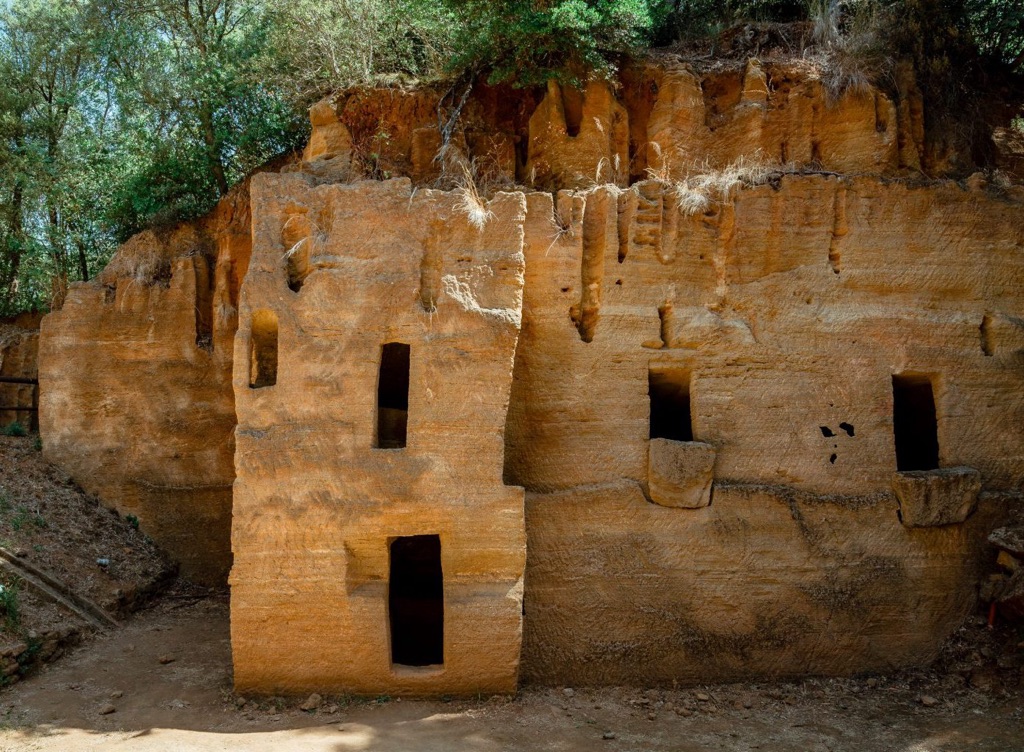
Necropolis of Populonia
Nestled on the picturesque shores of the Tyrrhenian Sea, the Necropolis of Populonia is a testament to the grandeur of Etruscan civilization. This ancient burial site features a myriad of tombs and burial mounds, offering a unique glimpse into the past. Visitors can explore the well-preserved remains which showcase exquisite craftsmanship – a clear indicator of the advanced culture. The necropolis is not only a historical treasure but also offers scenic views of the lush Tuscan landscape.

